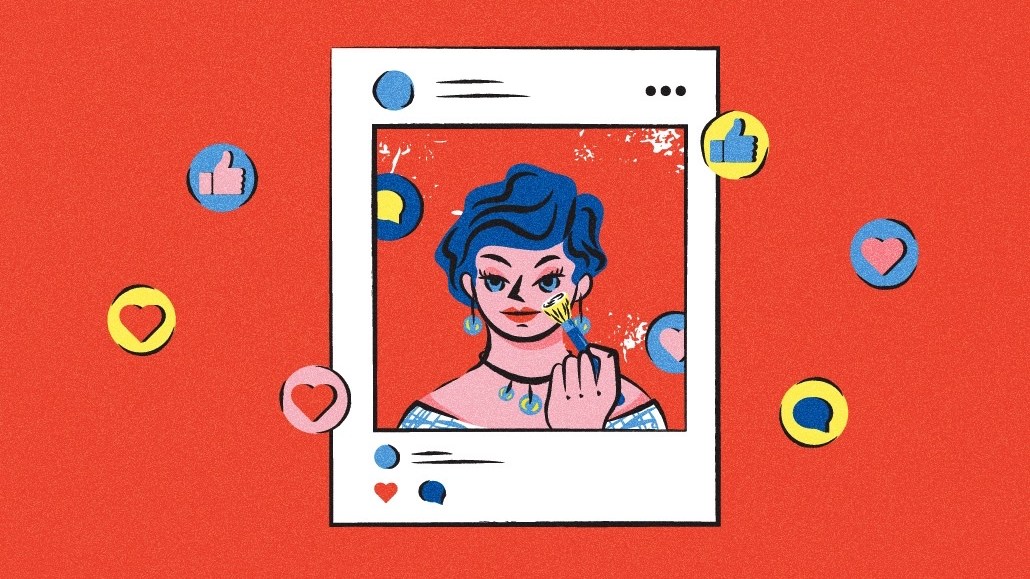Save 50% on a 3-month Digiday+ membership. Ends Dec 5.

Lysol is taking a product placement approach to working with influencers for TikTok. The household cleaning brand is investing in the creator economy to pitch its new product, the Lysol Air Sanitizer, which works like an air freshener to sanitize the air, as a way to garner interest in the product.
“It’s really about inserting the products into everyday moments that influencers can bring to life, which is very different from how we typically talk about our products in the media,” said to Benoit Veryser, vp of marketing at Lysol. “Influencers can help generate buzz and content for new products in a way that typically we cannot do.”
With this product, Lysol is looking to expand what its brand is known for beyond a surface cleaner with its new air sanitizer as well as appeal to Gen Z. The brand is investing in the creator economy as it is a growing space with its planned influencer strategy, much of which is focused on working with TikTok influencers. Rather than having micro-to-nano influencers to pitch the new product in a 15-second video, the brand wants them to insert its air sanitizer into their TikTok videos and vlogs as a product placement spot, according to Veryser.
The influencer content will start rolling out in September. The brand is keeping the specific influencers it is working with under wraps until August 14. Influencers will feature the Lysol Air Sanitizer name in its videos as they will be published organically, though it is unclear on how many videos per influencer. Neither the number of influencers nor the financial agreement were disclosed by Lysol.
Using this approach, the brand wants to avoid having an inauthentic in-your-face strategy, but the objective is to get influencers to consider the product without having to do all kinds of cleaning activities all the time as part of this strategy. In addition, the brand will advertise its 15-second ad spot on Instagram and does not plan to advertise on X (formerly known as Twitter) due to the brand focusing on video based social media platforms.
The company will also use experiential in-person activations in the fall, where it will bring its product to the consumers to events like karaoke to show off the use of the product. Lysol will also leveraging QR codes at said events to collect first-party data to lead directly to its website and social media accounts. At this planned event, consumers will be able to experience how germs spread in the air, and have them test out the product to compare that scented air fresheners cannot sanitize compared to its product. The brand will also leverage its influencers to capture content and for them to publish it on their own accounts.
With that said, it is unclear how much Lysol spent on influencers and this campaign, as the brand declined to share exact figures. According to Vivvix, including paid social data from Pathmatics, the brand spent a little over $13 million so far on advertising efforts, down from $55 million in 2022. In addition Sensor Tower data indicated Lysol also invested heavily in its advertising campaigns in the first quarter of 2023, with its ad budget increasing by almost 100% quarter-over-quarter compared to 2022, and by almost 200% yearly with 2023 being the first year that Lysol has included TikTok in its advertising budget.
Ad position: web_incontent_pos1
Prior to its new product launch, the brand would publish organically its digital content on Instagram and Snapchat while also boosting it with paid spend during the pandemic. For its influencer content, it will be published on its social media accounts with its influencers tagged as the brand wants to meet where Gen Z consumers are, preferably TikTok.
“The pandemic raised our awareness on the stakes of the importance of clean air, so now the brand’s opportunity is to be first with a relevant solution of disinfecting the air for which Lysol is well poised,” said Mat Zucker, senior partner, co-lead of marketing and sales at Prophet, a growth strategy consulting firm. “One proven way for a new product to persuade and motivate is via the classic demonstration, but Lysol reimagined and updated it for digital and social channels.”
With TikTok, content creators of all sizes can go viral and land deals with brands, causing the already surging influencer marketing industry to see growth. According to HubSpot’s customer relationship management platform, more than half of marketers who invest in influencer marketing work with micro-influencers.
Lysol’s strategy of using TikTok and Instagram as a platform for promoting its campaign demonstrates the brand’s understanding of the relevance of these platforms to connecting with consumers, especially young people, according to Joshua Dreller, senior director of content marketing at Skai.
“By focusing on visual storytelling and interactive elements, Lysol is keeping step with the digital age, marrying its innovative product, Lysol Air Sanitizer, with contemporary marketing strategies,” he said, pointing out that the holistic approach remains crucial post-pandemic as consumers continue to value authenticity, information, and engagement.
More in Marketing

Ulta, Best Buy and Adidas dominate AI holiday shopping mentions
The brands that are seeing the biggest boost from this shift in consumer behavior are some of the biggest retailers.

U.K. retailer Boots leads brand efforts to invest in ad creative’s data layer
For media dollars to make an impact, brands need ad creative that actually hits. More CMOs are investing in pre- and post-flight measurement.

‘AI is permeating everything we do’: How Guitar Center developed 2 AI tools this year
This summer, the company launched a chatbot called Rig Advisor to help customers find the right instruments and products.
Ad position: web_bfu



